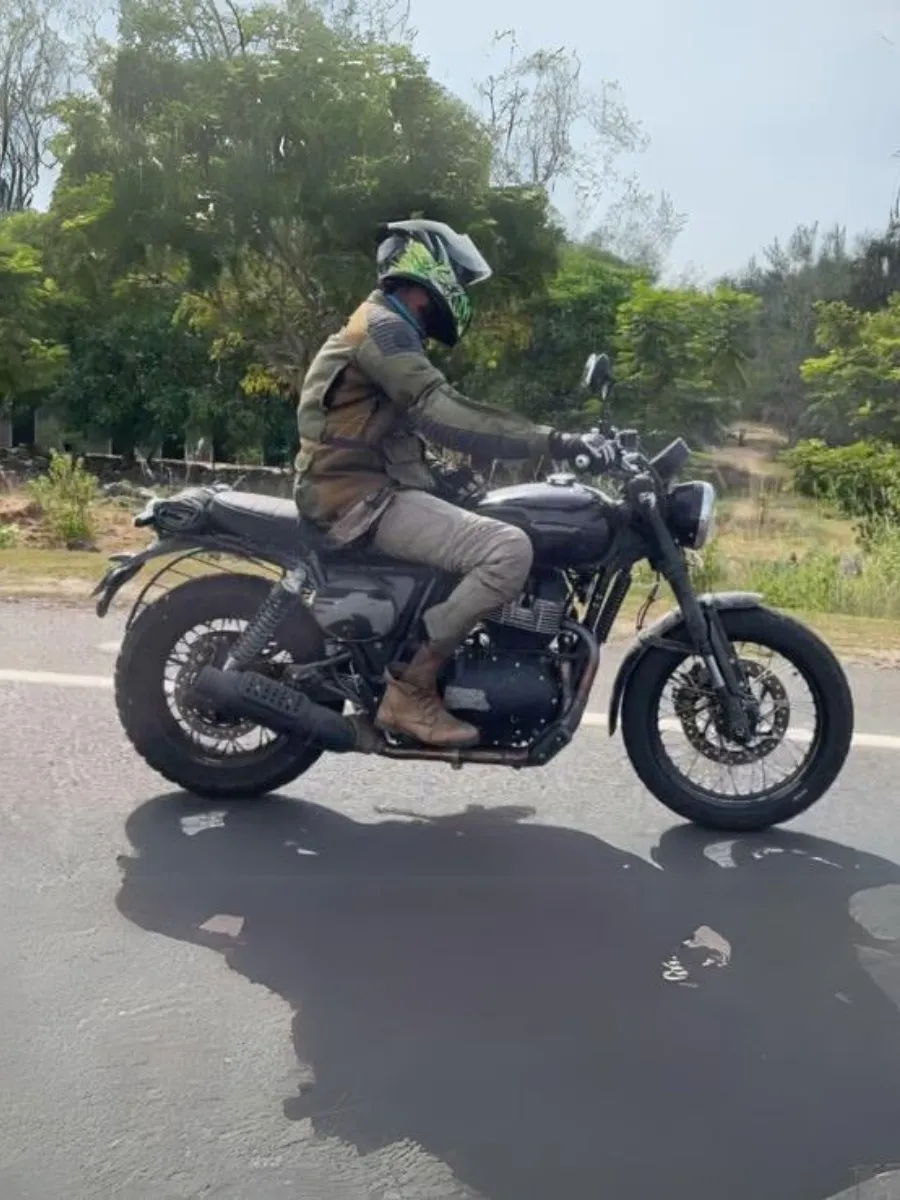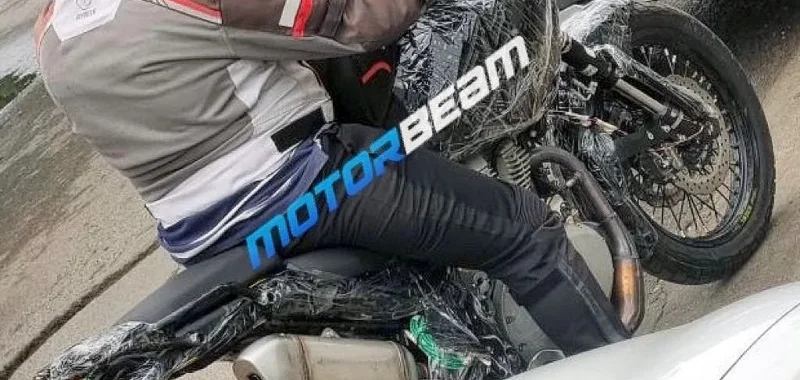The Royal Enfield Himalayan 650 has been on the motorcycle enthusiasts’ wish lists ever since the 650 twins were launched way back in 2018. A little over half a decade later, a test mule of what appears to be a twin cylinder Himalayan has been spied testing. Most motoring publications are calling it the Himalayan 650 but is it, really? Let’s first look at the spy shot before we dive into what this brand new Royal Enfield could or should be.

Spy shot courtesy Motorbeam
As the spy shot indicates, the motorcycle appears to be a high-riding adventure bike, with Dakar-racer inspired cues. And since it’s a Royal Enfield, how can retro be far behind? Sample this, there’s the half fairing that’s quite slim and not too dissimilar from what’s on offer with similar-looking adventure motorcycles such as the Aprilia Tuareg 660, the Yamaha Tenere 700 and lest we forget, the big-daddy Ducati Desert X.
This bike, at least under camouflage, looks slimmer than the Himalayan 450 but that could be because of the fairing masking the tank’s girth. There’s a big wheel up front, likely to be a 21 incher. That this motorcycle makes plenty of power is indicated by the twin petal disc up front while suspension is an adjustable USD unit. These specs are the highest we’ve seen on a Royal Enfield motorcycle, ever. So, it’s probably going to be the flagship, sitting above the Super Meteor and Shotgun 650s.
Now, to the meaty part of the equation: the engine. From the looks of it, the motor does have the crankcase seen on the 650s, which means that it could be a parallel twin. In fact, the high mounted exhaust has only header pipe clearly visible while the other seems to be snaking across the front, from the bottom, before merging into the left unit. The header gets quite fat at this point. The design seems different from the 2X1 exhaust design we’ve seen on the upcoming, Scrambler-style Bear 650 though.

Royal Enfield seems to have generously dipped into the Himalayan 450’s parts bin, and that’s a really good thing as it’ll help keep this motorcycle’s price tag very competitive. For instance, the grab handles, the rear mudguard, tail lamps integrated with turn indicators, the rear tyre (probably even the rims), saree guard and even the seats seem to be coming straight off the Himalayan 450. A monoshock rear suspension can be confirmed.
More similarities with the Himalayan 450 include the instrument cluster, which is the same round unit, and the front turn indicators. The mirrors are different though. Overall, the motorcycle seems to be in an advanced state of production readiness, which means that it could just be a year away. Optimistic motoring writers are even suggesting a Rider Mania 2024 unveil. That would be a wonderful prospect.
What we don’t know yet…
It’s hard to make out the frame of this motorcycle from the solitary spy shot we have here. From the looks of it, it seems different from the current range of Royal Enfield 650s, which use double cradle tubular frames. Now, the Himalayan 450’s frame is very different, in that it uses the engine as a stressed member, and is a trellis unit developed around the 450cc Sherpa single cylinder engine. Shoehorning the 650cc engine into this frame could be a big challenge as the 650cc motor is not just heavier but is also much wider.
It’ll be interesting to see if Royal Enfield uses the double cradle frame front end, and replaces the rear of the frame with a new sub-frame. That’s possibly the direction the Himalayan 650 could take. Meanwhile, here’s a picture of a adventure 850cc (bored out 650cc twin engine) motorcycle concept that Death Spray Custom recently showed at the Goodwood Festival Of Speed at the UK.
As the picture indicates, the frame is a double cradle unit with only the rear subframe different. The other big unknown about the Himalayan 650 involves the engine. While the 650cc twin has enough torque even on the 248 Kg Super Meteor, more performance won’t hurt. If Royal Enfield decide to bore out the 650 motor to something bigger, say 700cc or 750cc, or even go the whole hog and deliver a 850cc motor, we could have a big fast adventure motorcycle that’s relatively quite simple thanks to its air-oil cooled nature. Is this what the middle weight adventure motorcycle market lacked? Time will tell.
Then, there’s the elephant in the room: weight. Using the double cradle frame and the air cooled 650cc engine or its derivative means that weight could be a concern. With the Himalayan 450 already feeling top-heavy for many riders, it’ll take some considerable engineering to make all that weight disappear on the Himalayan 650. Exciting times ahead.
The post Twin Cylinder Royal Enfield Himalayan Spied: But Is It A 650? first appeared on Cartoq.
Source link

